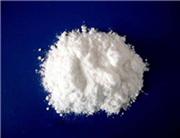|
Product name
|
Trilostane
|
|
CAS No
|
13647-35-3
|
|
Molecular formula
|
C20H27NO3
|
|
Molecular Weight
|
289.3495
|
|
Amino Acid Composition:
|
10% of theoretical
|
|
Type:
|
Powder
|
|
Apperance:
|
white powder
|
|
Assay
|
99%
|
|
MOQ
|
10G
|
Details :
Product name:Trilostane
Synonym: Veto r,yl
CAS Registry Number:13647-35-3
Alias:99%
Einecs No:237-133-0
Grade : Pharmaceutical Grade
Storage: Shading, confined preservation
Appearance:White crystalline powder
Usage : Trilostane can inhibit cortical hormones in the process of synthesis of 3 beta dehydrogenase, make the cortis.ol, aldoster.one synthesis decreased, clinically used in the treatment of Cushing syndrome (hypercortisolis.m) and primary aldosteronis.m. This product also had significantly effect to decreased serum level.
Application
Trilostane is used in the treatment of Cushing's syndrome. It is normally used in short-term treatment until permanent therapy is possible.
Trilostane blocks an enzyme involved in the production of several steroids including cortiso l. Inhibiting this enzyme inhibits the production of cortis ol. In Cushing's syndrome, the adrenal gland overproduces steroids. Although steroids are important for various functions of the body, too much can cause problems. Trilostane reduces the amount of steroids produced by the adrenal gland.
Trilostane produces suppression of the adrenal cortex by inhibiting enzyma tic conversion of steroids by 3-beta-hydroxysteroid dehydrogenase/delta 5,4 ketosteroidisomerase, thus blocking synthesis of adrenal steroids.
Side effect:Symptoms of overdose include darkening of skin, drowsiness or tiredness, loss of appetite, mental depression, skin rash, and/or vomiting.

 China
China



